TODAY’S GUEST BLOGGER: MELISSA STEWART
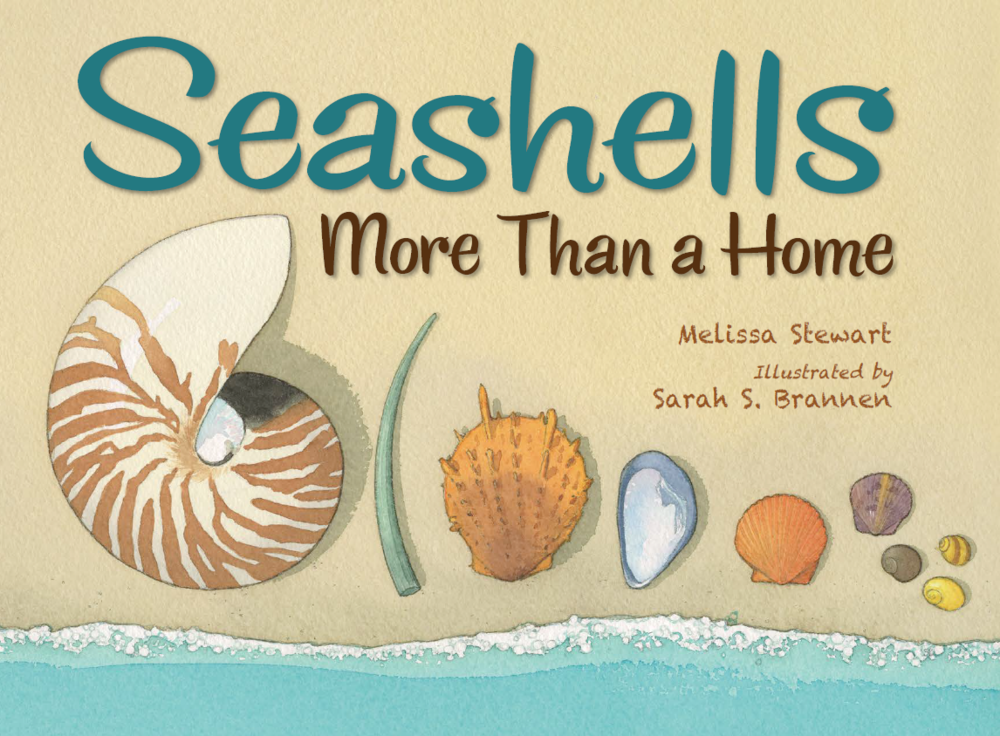
The dual-layer format of Seashells: More than a Homemakes it ideal for grade 3-5 lessons that focus on differentiating main ideas and supporting details. It can also be used as a mentor text for understanding a compare and contrast text structure as well as the text characteristics of a lyrical voice. The activities below support both the science and ELA standards for most states.
Before You Read
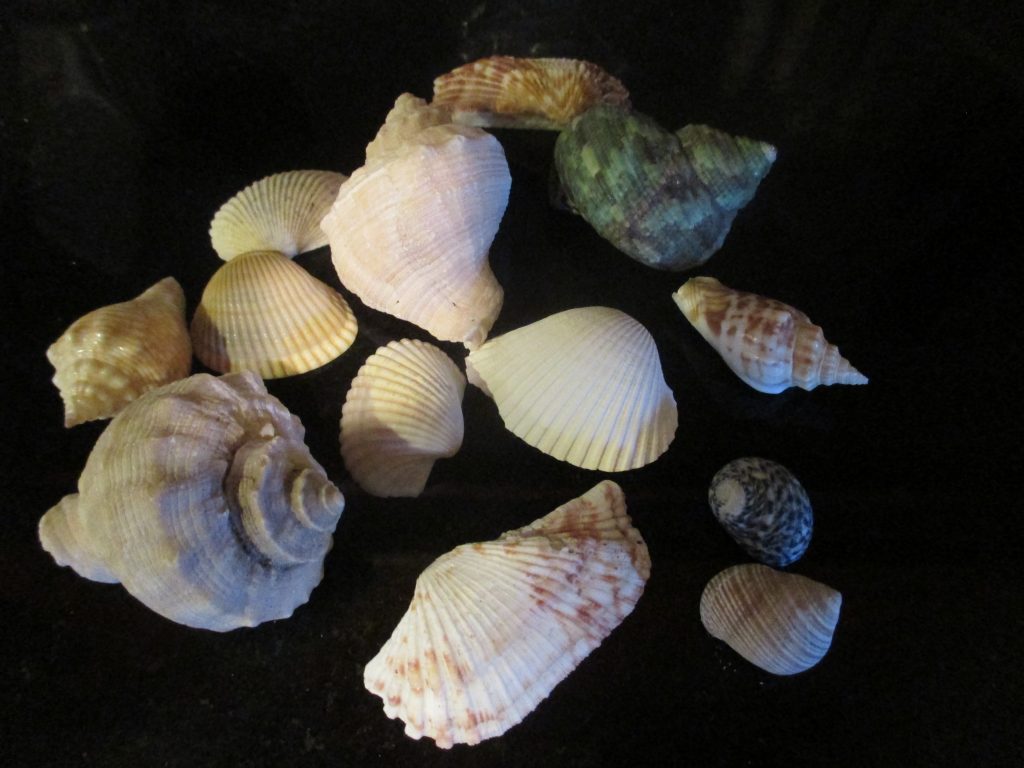
After setting up a collection of seashells in your classroom science center, divide the class into small groups and allow time for students to examine the shells. Encourage the groups to discuss the following question:
- What is a seashell?
- Why do you think some sea creatures have shells?
- Can you think of ways a shell could help an animal survive?
- Can you think of ways a shell could make it harder for an animal to survive?
When the groups seem ready, invite the students to gather in the classroom meeting area. As each group shares out, record their ideas on chart paper.
Next, introduce Seashells: More than a Home by reading the title and the names of the author and illustrator. After showing your class the full cover, front and back, encourage students to predict the main idea of the book. Now show the children the book’s endpapers and title page. Do they have any new ideas? Be sure to add theirresponses to the chart paper.
As You Read
Work with your students to create a data table that lists the name of each mollusk, the surprising function of its shell, and the familiar object the author compares each shell’s function to. Your final data table may look like this:
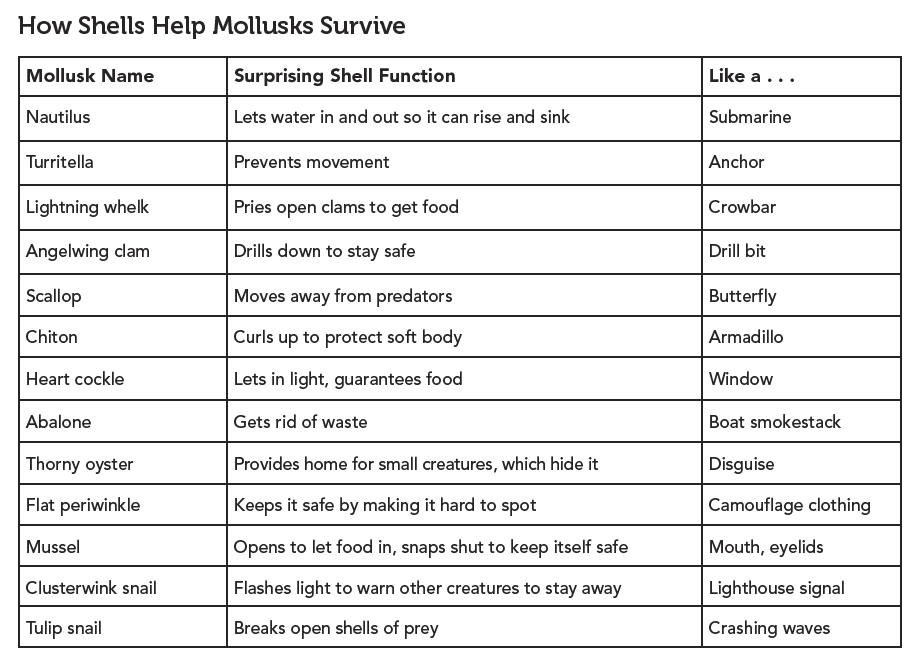
After You Read
After dividing the class into small groups, give each team an enlarged photocopy of the first column of the data table and provide time for one teammate to cut apart the mollusk names. Then encourage students to use the information in the data table and Seashells: More than a Home to sort the mollusks into categories based on how they use their shells to survive.
Next, give each group six index cards and invite them to write one of the categories they’ve identified on each card. Be sure to let students know that they don’t have to use all six cards.
When the teams seem ready, invite one group to tape their category cards to the wall above the classroom meeting area. Then invite the other teams to tape any cards with additional categories to the wall. Encourage the class to discuss the categories. Can any of them be combined?
As the discussion winds down, assign each group one category and ask the teammates to choose a representative who will tape the relevant mollusk names under the category card on the wall. After all the representatives have had a turn, point out any conflicting ideas among the groups and then invite students to respectfully discuss these disagreements.
To facilitate the conversation and promote full-class engagement, help students stay focused on the topic. Restate any unclear comments or ideas, and encourage students to give one another the time they need to formulate and express their ideas and rationale. When the class comes to a consensus, work with your students to develop a main idea statement for Seashells: More than a Home and record it on chart paper. Then invite the groups to work together to record three details that support the class’s main idea statement.
A Look at Nonfiction Craft Moves
Divide the class into small groups and encourage the teams to think carefully about the craft moves author Melissa Stewart used as she wrote Seashells: More than a Home. The following questions can guide their discussion:
- Does this book have a narrative or expository writing style? Explain your rationale.
- What is the book’s nonfiction text structure? Explain your rationale.
- How do you think the book would have been different if the author had chosen a problem-solution text structure?
- Why do you think the author and illustrator included so many text features in this book?

- How would you describe the voice of the book? Can you spot any language devices that help the author create that voice?
- Does the text’s voice seem to match the style of Sarah Brannen’s illustrations? Explain your rationale.
- Why do you think the author included similes throughout the book?
- How did the author create a satisfying ending for the book? How does the illustrator’s artwork connect back to the beginning of the book?
- Can you think of a different way to end the book?
As the group discussions wind down, invite the teams to gather in the classroom meeting area to share their ideas. During this conversation, record the students’ ideas on chart paper. Then use those ideas to create a class list of key craft moves in informational writing.
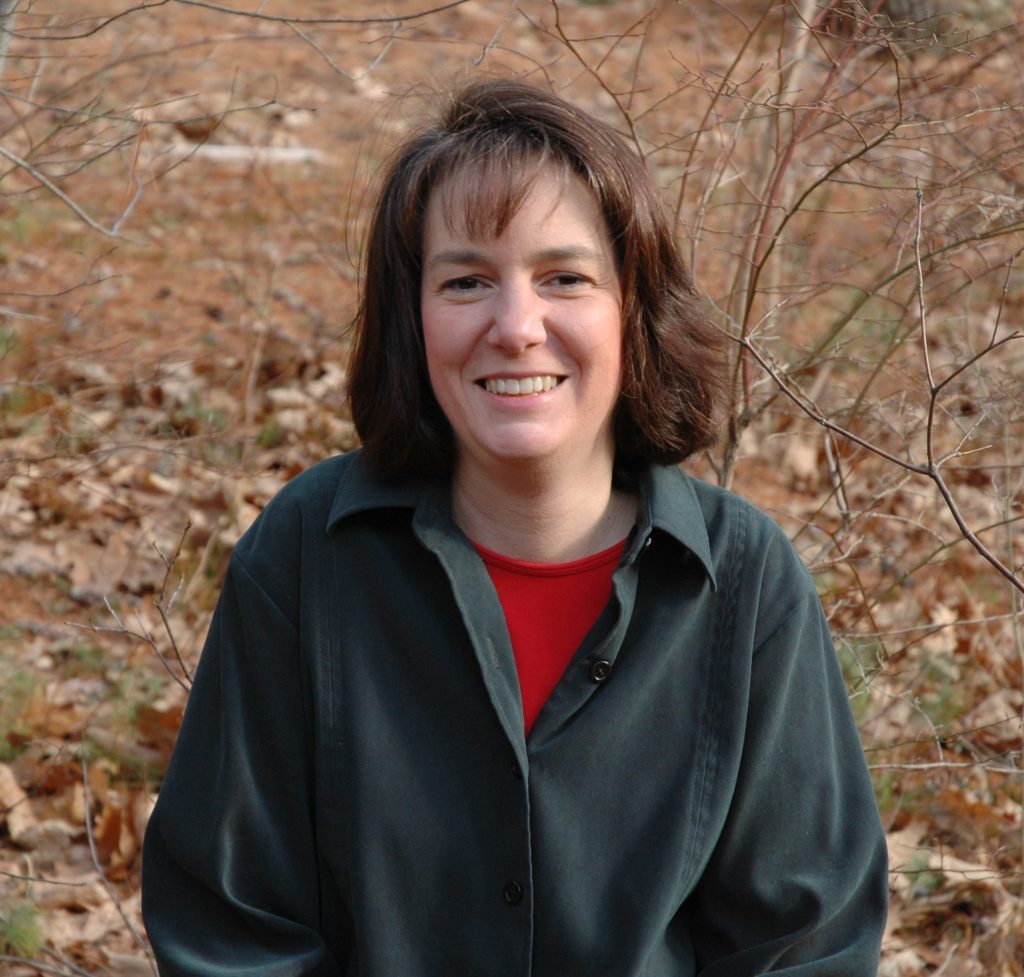
Melissa Stewart is the award-winning author of more than 180 science books for children and co-author of Perfect Pairs: Using Fiction & Nonfiction Picture Books to Teach Life Science. Her newest picture book, Seashells More than a Home, is a Junior Library Guild selection and received a starred review from Booklist. Melissa’s highly-regarded website is bursting with resources for teaching nonfiction reading and writing.




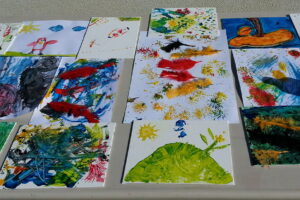
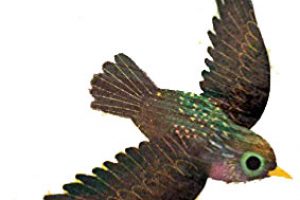


Leave a Reply
Your email is safe with me.